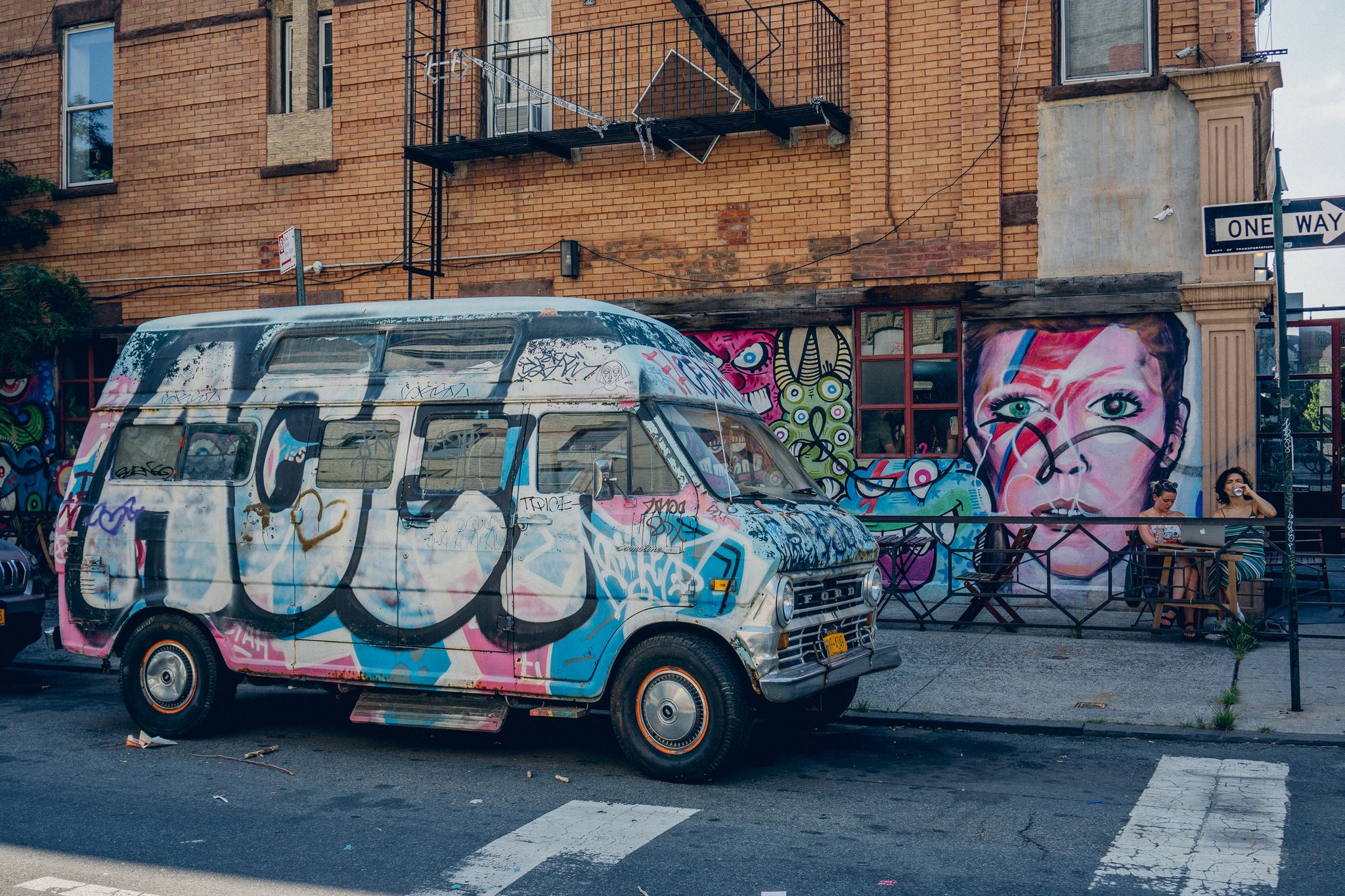- Feature
- 12/31/2020 @ 2:08 PM
To me, New York is a never-ending art gallery. What some people might call vandalism or graffiti remains one of my favorite parts of this city today. The walls speak volumes; they can tell you how the city is feeling. It helps me, as a photographer, to express myself visually when I’m having a hard time putting my thoughts and emotions into words. I’m constantly wandering, gazing at the street art, tags, wheat-paste graphics, and writing on the wall as if they’re the halls of an art gallery. Unlike museums, the galleries are spontaneously replaced with new work almost daily, and interestingly enough, illegally.

Ever since I discovered my love for street photography last year, I’ve been heavily inspired by the raw photographs of a crime-ridden ‘70s and ‘80s New York. While studying the works of Bruce Davidson, Richard Sandler, Willy Spiller, Martha Cooper, and others, I was fascinated by the classic photos of the graffiti-riddled train system.
I’m nostalgic for those days (minus the crime), even though I wasn’t even alive at the time. Since the trains are paint-free now, wandering Bushwick and photographing graffiti trucks all around the city has been my ode to the “Old New York.” It’s a constant thrill finding new juxtapositions of color and backdrops to compose with the alternating vans and trucks.


Whether I’m building my collection of graffiti vans, or simply trying to incorporate graffiti into my street photography, I always try to include a human element when possible. I’ll wait patiently for an interesting subject to pass by, sometimes interacting with the environment in an unique way. Other times, all I can hope for is someone riding by on a bike. If all else fails, I’ll take a static photo for my personal collection.


Growing up in a rural suburban town outside of Milwaukee, I’m not sure why I’m so drawn to the gritty, urban side of the spectrum. Perhaps it’s because New York is the exact opposite of where I grew up- a small town of roughly 15,000 people, surrounded by farmland and virtually zero crime. If a USPS van got tagged up like you see in Brooklyn, my hometown would get the FBI involved and the perpetrators would get the book thrown at them for destroying federal property. It would make the news; there would be an uproar and a town meeting.
Graffiti and a sense of lawlessness, canyons of skyscrapers brimming with energy, in addition to the endless photographic opportunities...these are all dynamics that sucked me in ever since my first visit to New York City.


Furthermore, for a decade, beggining in my adolescent years, I was deeply immersed in and devoted to skateboarding and it’s subculture. Skateboarding and the art community have so much in common that I could write a separate article entirely on the topic. It’s no surprise I ended up as a photographer having constantly yielded a Hi-8 camcorder in my hands as if it was glued to my fingertips.





I was still skateboarding up until 2014, and then a photo of an abandoned building in Milwaukee caught my eye on Instagram. I was fascinated. The urban decay, overgrowth of vegetation, the graffiti and destruction, it all looked like something from a post-apocalyptic world. I had to explore it for myself. I was hooked on photography from that moment on.
Fast forward six years and now I’m realizing how all my interests and different phases of subject matter in photography have molded my style into what is today. A recipe of photographic ingredients consisting of urban decay, dense metropolitan environments, portraiture, and visually documenting the story of life through street photography.

You can see more from Mike Szpot on his Instagram and his Website.
